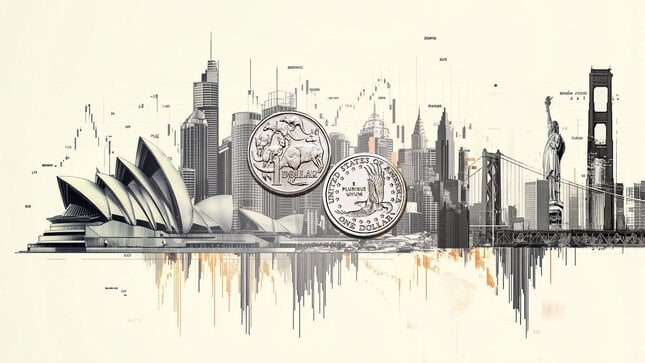If you follow alternative financial media, you'll often hear dollars derisively referred to as "fiat currency." What exactly does this term mean and why is it often used as a slur?
Investopedia defines fiat money as a government-issued currency not backed by a physical commodity such as gold or silver.
So, what is fiat backed by?
"The full faith and credit" of the issuing government.
In other words - nothing.
Fiat money is just paper (or digits in a computer). It only has value because the government says so, and the majority of people accept it at its word. It doesn't hurt that governments have the power to maintain a monopoly over their currency through legal tender laws, keeping competing currencies at bay.
All modern government currencies are fiat, including the dollar, the euro, the yen, and the yuan.
Since fiat money isn't tethered to a commodity, its value effectively floats. It is based on supply and demand, along with the stability of the issuing government. Most people express the value of fiat money by comparison to other fiat currencies. When you hear about a "strong dollar" it means the greenback is strong compared to other global currencies.
The problem with fiat money
So, what's the problem with fiat?
It is effectively limitless.
Governments can create as much fiat money as they want. We often refer to this as "money printing," although today it's not even that hard. A government or central bank can create new money with a few keyboard strokes.
As economist Thorsten Polleit put it, fiat money economies are built on lies.
"Fiat currencies are produced by central banks and commercial banks’ credit expansion. In fact, central banks in cahoots with commercial banks increase the outstanding money supply by extending loans to firms, private households, and government entities. It amounts to money creation from thin air or—in a way—counterfeiting money."
We go to prison for counterfeiting. The government does it as a matter of policy.
But when you really think about it, there is no fundamental difference between me printing off a bunch of bills and calling it "money" and the government doing it. If I could get enough people to believe my paper had value, it could be money too.
Sound money such as gold and silver, or currencies backed by a commodity, are limited by the supply of that commodity. You can't print gold or silver. That means if a country issues a gold-backed currency, the only way it can create more is to acquire more gold. This limits the issuance of new money, minimizing inflation and keeping the value of money relatively constrained and constant.
Think of it this way: when you make more of a thing, the value of the other thing decreases. If you have 100 widgets and make 100 more, the value of each widget will decrease (assuming demand is stable.) The same is true for dollars. When you make more dollars, each individual dollar is worth less and it buys less. Or as Polleit put it, "The relentless expansion of the quantity of fiat money causes the purchasing power of the money unit to decline over time."
"What is more, increasing the quantity of fiat money creates winners and losers, it is not a win-win game: The early receivers of the new money benefit at the expense of the late receivers. It leads to an unjust and unsocial distribution of income and wealth within society."
You can see the inflationary tendency in the fiat dollar economy when you compare the expansion of the gold supply to the expansion in the dollar supply.
The above-ground gold stock has expanded by an average of 1.2 percent annually over the last 529 years. Since 1960 the average growth in the gold supply is slightly higher at 1.8 percent, ranging from 1.4 percent to 2.2 percent per year.
Meanwhile, since 1960, money supply growth varied from a low of 1 percent in 1993 to a high of 19.1 percent in 2020. The inconsistency in the growth rates results in frequent and sharp swings in prices. There are either not enough or too many dollars circulating relative to the prevailing level of economic activity. This volatility is part of the boom-bust cycle.
But over the long haul, the value of every fiat currency depreciates over time because governments can't resist the temptation to create more of it.
Consider the dollar. The greenback has lost more than 85 percent of its value since President Richard Nixon severed the dollar from the last vestiges of the gold standard. The purchasing power of a 1971 dollar is equal to about 13 cents today.
Meanwhile, the dollar value of gold has gone from $35 an ounce to around $2,300 an ounce today. In percentage terms, that’s a 6,471 percent increase.
Fiat money also introduces counterparty risk. In simple terms, it is the possibility that the party on the other side of a transaction might not fulfill its obligation.
Who is the counterpart behind fiat money?
The government.
If you trust the government to maintain a sound, stable currency, I guess there's no problem. But if you don't?
When you boil it all down, fiat money is smoke and mirrors. You want real money. And gold and silver have been filling that role for thousands of years.
Money Metals Exchange and its staff do not act as personal investment advisors for any specific individual. Nor do we advocate the purchase or sale of any regulated security listed on any exchange for any specific individual. Readers and customers should be aware that, although our track record is excellent, investment markets have inherent risks and there can be no guarantee of future profits. Likewise, our past performance does not assure the same future. You are responsible for your investment decisions, and they should be made in consultation with your own advisors. By purchasing through Money Metals, you understand our company not responsible for any losses caused by your investment decisions, nor do we have any claim to any market gains you may enjoy. This Website is provided “as is,” and Money Metals disclaims all warranties (express or implied) and any and all responsibility or liability for the accuracy, legality, reliability, or availability of any content on the Website.
Editors’ Picks

When are the China Retail Sales, Industrial Production and how could they affect AUD/USD?
The National Bureau of Statistics of China will publish its data for November at 02.00 GMT. AUD/USD trades on a positive note on the day in the lead up to the China Retail Sales, Industrial Production data. The pair gains ground as US Dollar softens amid the prospect of interest rate cuts by the US Federal Reserve next year.

USD/JPY weakens below 156.00 amid Fed rate cut outlook, BoJ rate hike anticipation
The USD/JPY pair trades on a negative note near 155.75 during the early Asian session on Monday. The US Dollar softens against the Japanese Yen amid the prospect of interest rate cuts by the US Federal Reserve next year.

Gold poised to challenge record highs
Gold prices added roughly 3% in the week, flirting with the $4,350 mark on Friday, to finally settle at around $4,330. Despite its safe-haven condition, the bright metal rallied in a risk-on scenario, amid broad US Dollar weakness.

Week ahead: US NFP and CPI, BoE, ECB and BoJ mark a busy week
After Fed decision, dollar traders lock gaze on NFP and CPI data. Will the BoE deliver a dovish interest rate cut? ECB expected to reiterate “good place” mantra. Will a BoJ rate hike help the yen recover some of its massive losses?

Big week ends with big doubts
The S&P 500 continued to push higher yesterday as the US 2-year yield wavered around the 3.50% mark following a Federal Reserve (Fed) rate cut earlier this week that was ultimately perceived as not that hawkish after all. The cut is especially boosting the non-tech pockets of the market.
RECOMMENDED LESSONS
Making money in forex is easy if you know how the bankers trade!
I’m often mystified in my educational forex articles why so many traders struggle to make consistent money out of forex trading. The answer has more to do with what they don’t know than what they do know. After working in investment banks for 20 years many of which were as a Chief trader its second knowledge how to extract cash out of the market.
5 Forex News Events You Need To Know
In the fast moving world of currency markets where huge moves can seemingly come from nowhere, it is extremely important for new traders to learn about the various economic indicators and forex news events and releases that shape the markets. Indeed, quickly getting a handle on which data to look out for, what it means, and how to trade it can see new traders quickly become far more profitable and sets up the road to long term success.
Top 10 Chart Patterns Every Trader Should Know
Chart patterns are one of the most effective trading tools for a trader. They are pure price-action, and form on the basis of underlying buying and selling pressure. Chart patterns have a proven track-record, and traders use them to identify continuation or reversal signals, to open positions and identify price targets.
7 Ways to Avoid Forex Scams
The forex industry is recently seeing more and more scams. Here are 7 ways to avoid losing your money in such scams: Forex scams are becoming frequent. Michael Greenberg reports on luxurious expenses, including a submarine bought from the money taken from forex traders. Here’s another report of a forex fraud. So, how can we avoid falling in such forex scams?
What Are the 10 Fatal Mistakes Traders Make
Trading is exciting. Trading is hard. Trading is extremely hard. Some say that it takes more than 10,000 hours to master. Others believe that trading is the way to quick riches. They might be both wrong. What is important to know that no matter how experienced you are, mistakes will be part of the trading process.
The challenge: Timing the market and trader psychology
Successful trading often comes down to timing – entering and exiting trades at the right moments. Yet timing the market is notoriously difficult, largely because human psychology can derail even the best plans. Two powerful emotions in particular – fear and greed – tend to drive trading decisions off course.

